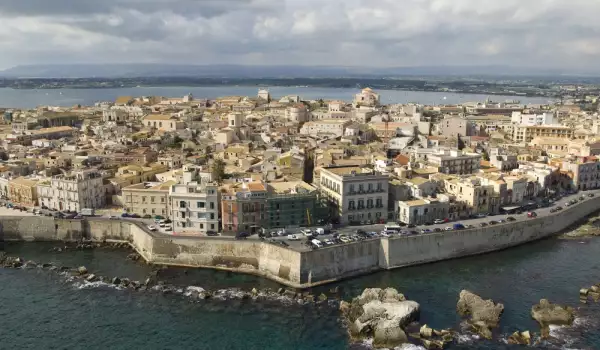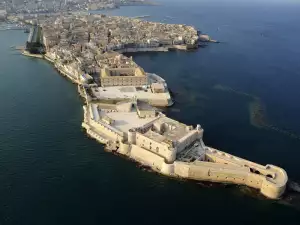Syracuse

Syracuse is a historic town in Sicily and the capital of the province of Syracuse in Italy. The town is famous for its beautiful Greek architecture, culture and its amphitheaters. It is known as the birthplace of the famous ancient scientist Archimedes.
The city of Syracuse, which is two thousand seven hundred years old, has played an important role in antiquity, when it was one of the most powerful centers of the Mediterranean. Syracuse has a population of 125 000 people.

The city was founded by Greek Corinthians and became a powerful city-state. Syracuse was as Sparta and Corinth and had a strong influence on the entire area known as Magna Grecia. In this area Syracuse was the most important city. Cicero described Syracuse as the greatest Greek city and the most beautiful of all cities. Syracuse later became part of the Roman Republic and Byzantine Empire.
Then the important role played by Syracuse was won over by Palermo, as it became the capital of the Kingdom of Sicily. The Kingdom of Sicily was united with the Kingdom of Naples to form two Sicilies until the unification of Italy in 1860.
The patron of the city is Saint Lucy, who was born in Syracuse. Saint Lucy is the thirteenth of December.
Syracuse was founded in 734 years BC. It was called Sirako. The settlers liked the land because it was fertile as well as the local tribes, who accepted them well. The city flourished and became the most powerful Greek Mediterranean city.
In the fifth century BC Syracuse was involved in a war against Athens. Syracuse received an order from the Spartan general to defeat all of Athens, destroying their ships and leaving them to starve.
In the early fourth century the tyrant Dionysius Senior led a war against Carthage and managed to conquer all of Sicily. After the military conflict, the tyrant built a twenty-two km wall along Syracuse. In 397BC Syracuse was again embroiled in war against Carthage. Then Carthaginians besieged city of Syracuse, but they were given a response.
Syracuse was visited several times by Plato. After the rule of Dionysus Senior, leadership was taken over by Dionysius Junior, who was replaced by Dion. Dion was a tyrant, so Dionysius Jr. returned to the throne.

In 345 BC a democratic government was established. Long infighting reduced the power of Syracuse. In 275 BC, power was assumed by Hiero II and during his fifty years of management Syracuse was famous as one of the most important capitals of Antiquity.
Gradually Christianity spread in the city. From 663 to 668 Syracuse became the seat of Emperor Constans II. Then the city passed into Arab hands. In 1038 the Byzantine general George Maniakes conquered the city and sent the relics of Saint Lucy in Constantinople.
In 1220 Syracuse was taken over by the Emperor Frederick II. He issued orders for the construction of the Palace of the Bishops and Bellomo. After his death a period of feudal anarchy followed.
In 1542 and again in 1693 the city was shaken by an earthquake. Cholera epidemic in 1837 led to a revolt against the government of Bourbon. In 1848 a revolution for Sicilian independence broke, in which residents of Syracuse took a serious interest.
After the unification of Italy, Syracuse regained the status of provincial capital. In 1870 the walls around the city were destroyed. Since the nineties of the twentieth century in Syracuse began serious reconstruction of the historic city center, which continues to today.
Among the landmarks of the city is the Greek theater, which has sixty-seven rows. It was used by the Romans, who had circus performances on its stage.
The city has a Roman amphitheater, which is partially cut into the rock. In Syracuse stands the Basilica of Santa Lucia and many churches including the Church Spirito Santo, built in the eighteenth century.








